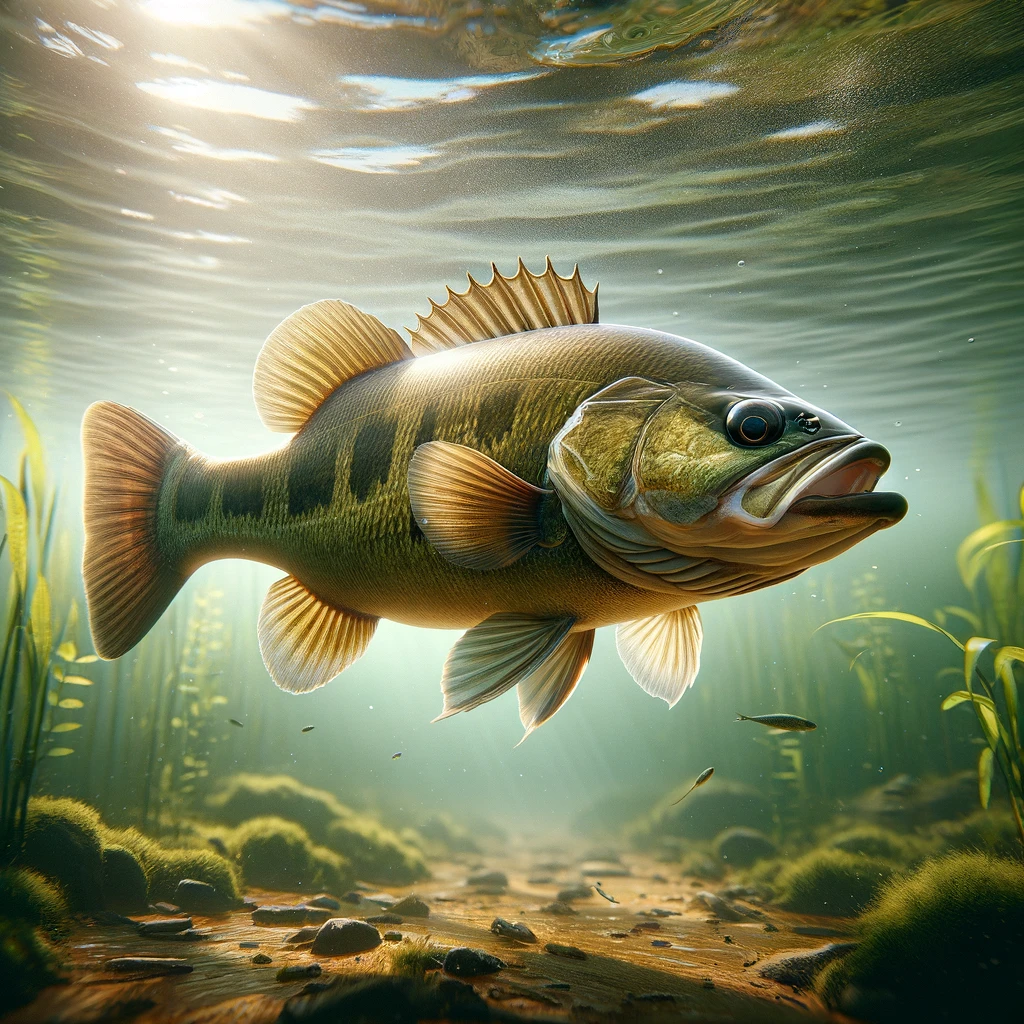February 8, 2024 — The Bureau of Reclamation is formally presenting solutions to address the problem of nonnative fish in the Colorado River that lies below the Glen Canyon Dam.
that lies below the Glen Canyon Dam.
The environmental process involves examining and assessing different ways in which the dam may affect the reproduction of smallmouth bass. It also involves considering changes to the procedure for conducting experiments involving strong water currents.
Yesterday, Reclamation released a preliminary report called the Supplemental Environmental Impact Statement (SEIS) . This report examines the possibility of changing the schedule of water released from Glen Canyon Dam in order to prevent the spread of nonnative fish, particularly smallmouth bass, downstream. This document provides additional information to the 2016 Glen Canyon Dam Long-Term Experimental and Management Plan (LTEMP) Final Environmental Impact Statement (FEIS) and Record of Decision
. This report examines the possibility of changing the schedule of water released from Glen Canyon Dam in order to prevent the spread of nonnative fish, particularly smallmouth bass, downstream. This document provides additional information to the 2016 Glen Canyon Dam Long-Term Experimental and Management Plan (LTEMP) Final Environmental Impact Statement (FEIS) and Record of Decision . Glen Canyon Dam is responsible for holding back Lake Powell, which is the biggest storage area of the Colorado River Storage Project.
. Glen Canyon Dam is responsible for holding back Lake Powell, which is the biggest storage area of the Colorado River Storage Project.
The suggested changes to the 2016 LTEMP FEIS are a response to the growing population of warmwater predatory fish below Glen Canyon Dam. These fish pose a threat to native fish species that are already endangered. One reason for this increase is the decrease in Lake Powell’s water level, which has caused the warmest layer of the reservoir, where these nonnative predators reside, to move closer to the dam’s water intakes. Consequently, it is now more likely for these warmwater predatory fish to pass through the dam and enter the Colorado River.
When the water from this layer is released below the dam, it raises the temperature of the river in that area. This creates the perfect environment for non-native warmwater fish to lay their eggs and reproduce, which is a danger to the native species in the river, including the humpback chub that is protected by federal regulations.
The draft SEIS examines different reservoir releases with different temperature combinations to determine how well they can disturb and prevent smallmouth bass from spawning and surviving.
Reclamation Upper Colorado Basin Regional Director Wayne Pullan expressed concern that if these invasive fish are able to establish themselves downstream of Glen Canyon Dam, it could jeopardize the progress made in restoring the humpback chub population. Eliminating an established invasive species is both costly and challenging, so it is crucial that the range of reservoir releases analyzed in this SEIS (Supplemental Environmental Impact Statement) is accessible prior to the 2024 spawning season.
expressed concern that if these invasive fish are able to establish themselves downstream of Glen Canyon Dam, it could jeopardize the progress made in restoring the humpback chub population. Eliminating an established invasive species is both costly and challenging, so it is crucial that the range of reservoir releases analyzed in this SEIS (Supplemental Environmental Impact Statement) is accessible prior to the 2024 spawning season.

 (Jan 18, 2024, via USBR)
(Jan 18, 2024, via USBR)High-Flow Experiments.
The SEIS also considers potential changes to the process of conducting high-flow experiment (HFE) releases. In its natural state, the Colorado River, particularly in the Grand Canyon, has sandbars and beaches formed by sediment carried by the river. These sandbars and beaches are important for recreation, providing habitat, and protecting cultural resources. However, when water is released from Glen Canyon Dam, it contains very little sediment because most of it settles in Lake Powell. To create and preserve sandbars and beaches, the LTEMP includes HFEs to transport sediment in the river below the dam. The SEIS investigates a wider timeframe for evaluating sediment that can be used for beach formation, potentially allowing for more HFEs during the spring. It’s important to note that HFE releases do not change the overall volume of water released from Glen Canyon Dam annually.
Background.
In August 2022, Reclamation conducted an Environmental Assessment (EA). The preliminary EA, titled Glen Canyon Dam/Smallmouth Bass Flow Options, was made available for public feedback on February 24, 2023. After reviewing the EA and approximately 7,000 comments received, Reclamation determined that further analysis was necessary.
From June 2023 onwards, Reclamation has been getting ready to create an SEIS by collaborating with federal agencies, states, tribes, cooperating agencies, stakeholders, and other interested parties. The preliminary SEIS includes feedback received during the public scoping period and the public comment period of the initial EA.
Public Involvement.
On Friday, February 9, 2024, the draft LTEMP SEIS will be officially announced in the Federal Register, marking the start of a 45-day period for the public to provide comments. Reclamation will organize three virtual public meetings to educate people and address any queries. To participate in a virtual meeting, submit written comments, or to gather further details, visit the project’s website at https://www.usbr.gov/uc/progact/amp/index.html .
.
The LTEMP draft SEIS focuses on the timing of releases from Glen Canyon Dam on an hourly, daily, monthly, and experimental basis, rather than on an annual basis. The annual releases are determined by the 2007 Colorado River operating guidelines, which are being revised and will expire in 2026. There is a separate planning process currently underway to develop new guidelines for after 2026 when the current interim guidelines expire.


I think it is so cool how humans have control over the dams and watch over the fish in the lake so we can see which ones are going instinct. If it weren’t for our technology the native fish would go instinct. So awesome.